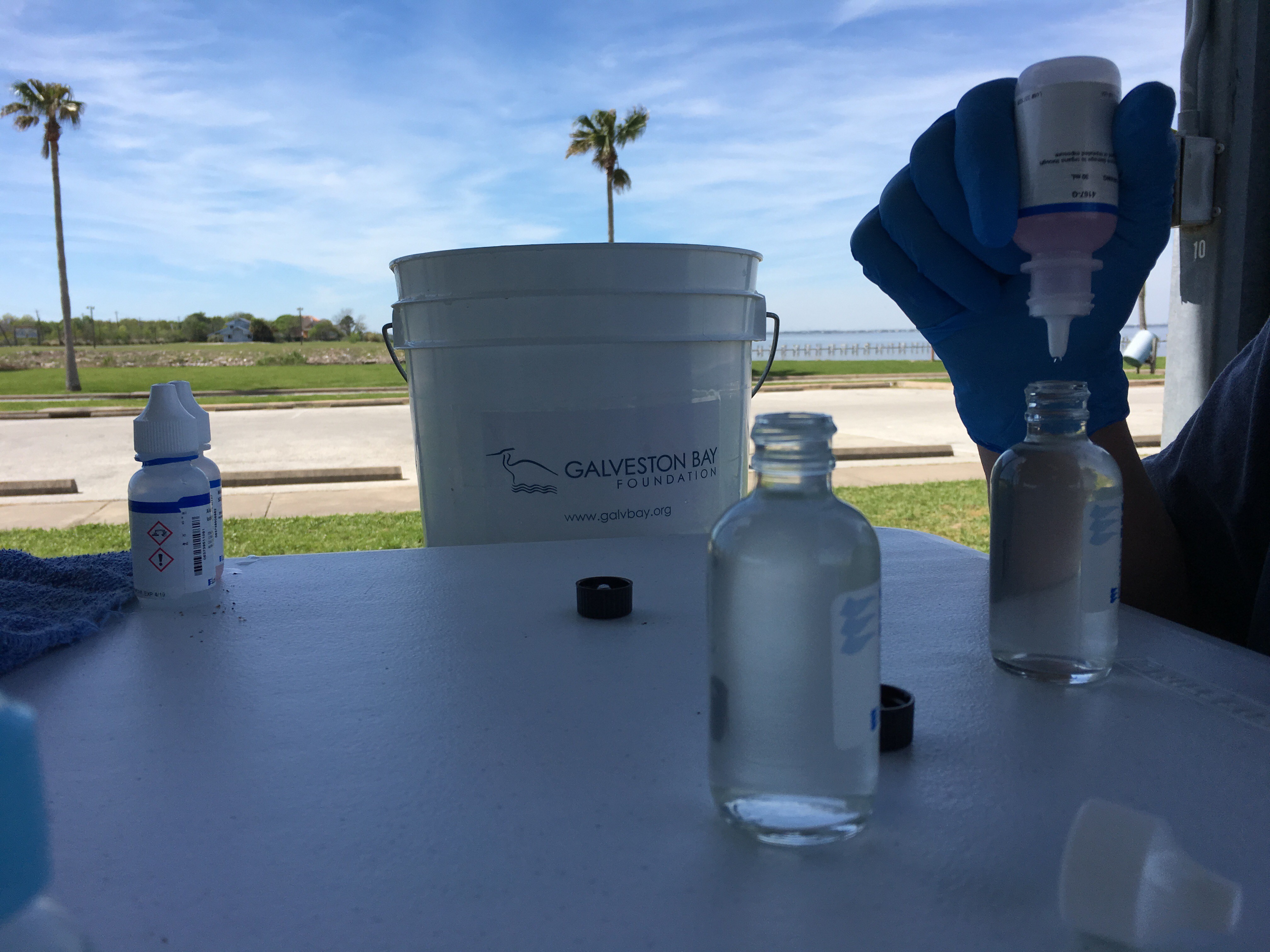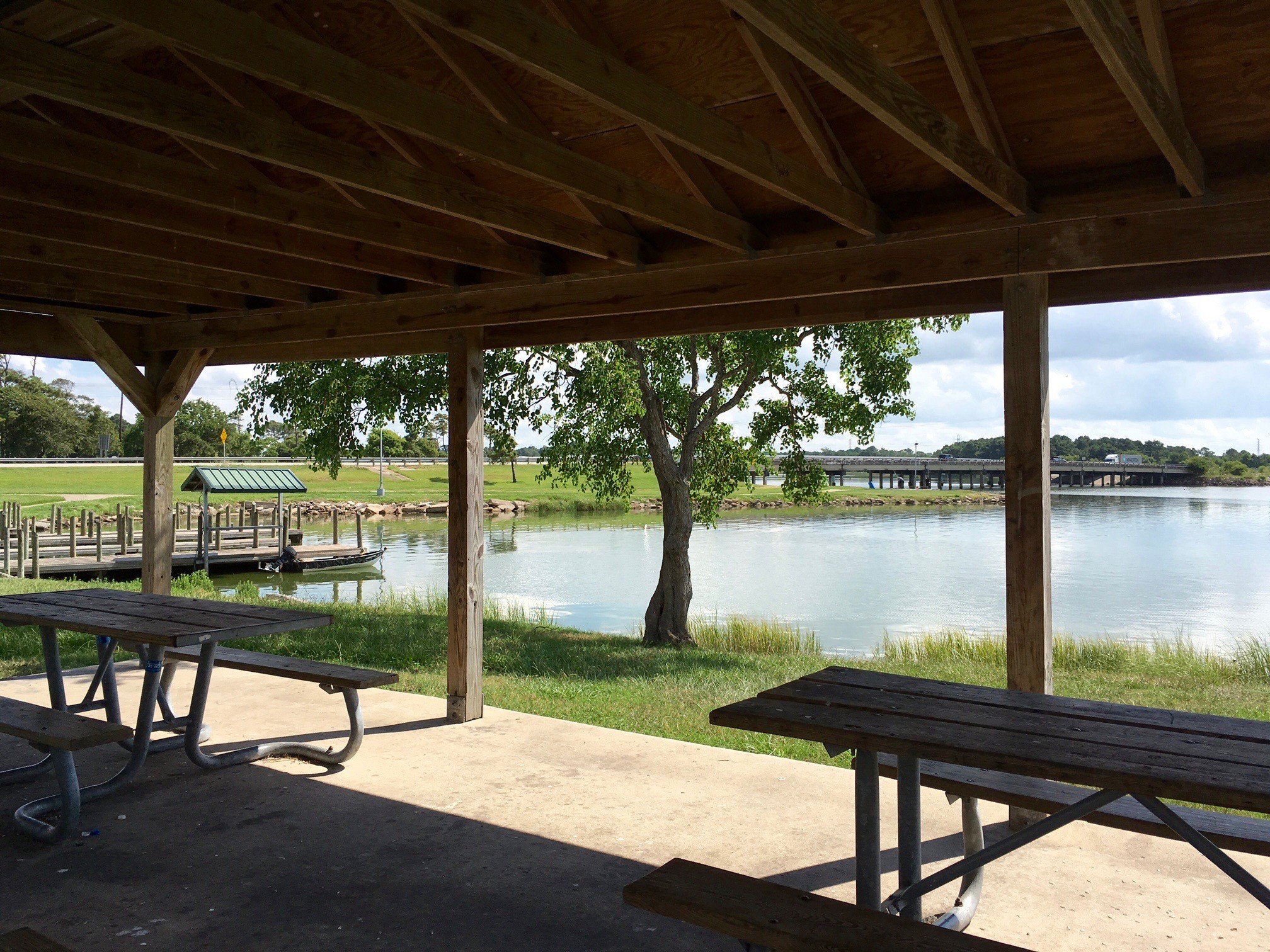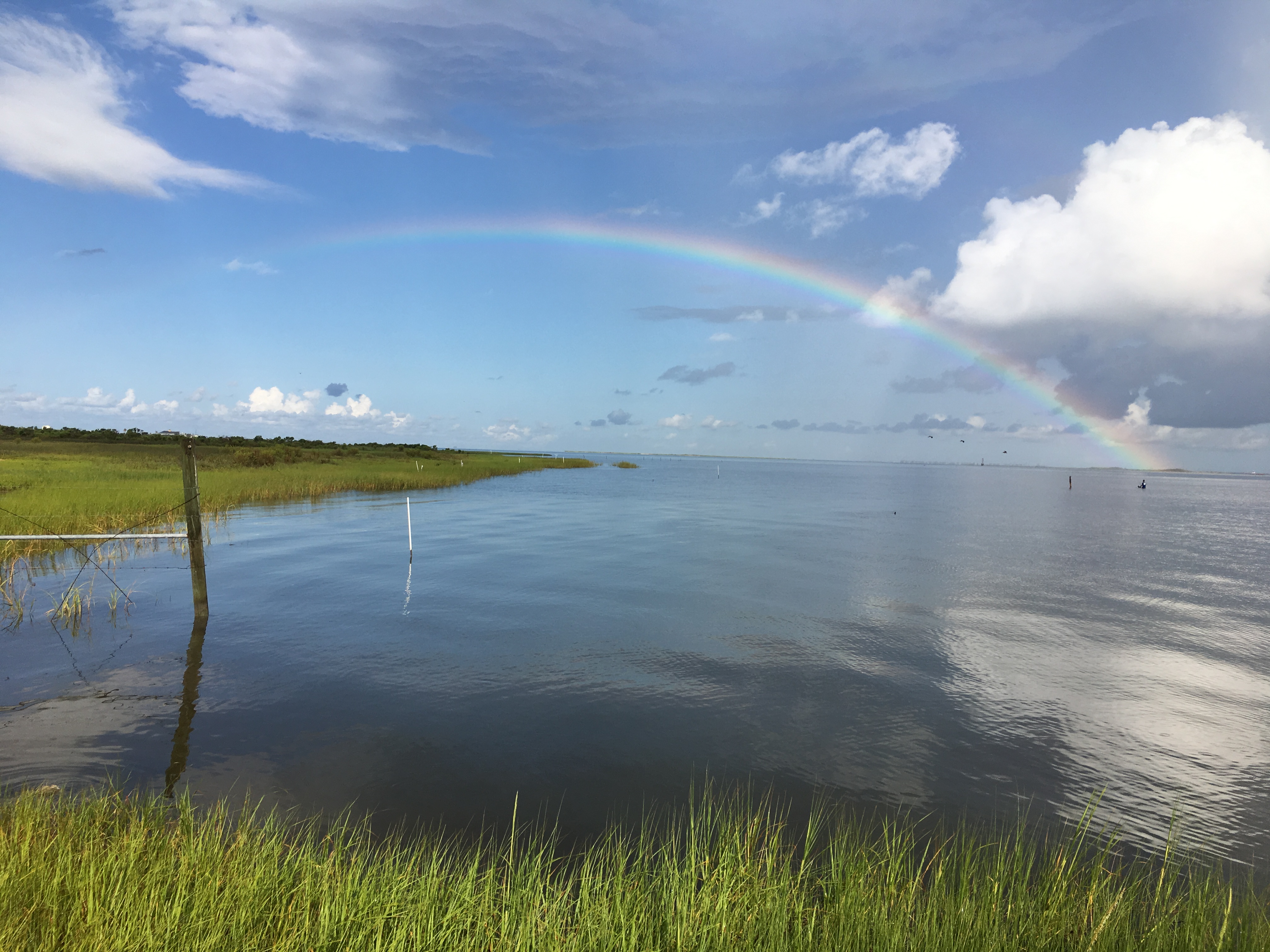Galveston Bay Foundation’s Water Quality Monitoring Team is a team of trained volunteers who conduct monthly water quality sampling at specific locations around Galveston Bay. In addition to providing more information on the health of Galveston Bay’s waters, these volunteers serve as the eyes of their water monitoring site. While collecting water quality data, they are out at their site for several hours each month and become intimately familiar with the goings on of their location. They are often the first to notice when something abnormal is going on. Because of this, the observations they collect are just as important as the water quality data they test for.

Water Quality Samples at Bayshore Park
Conducting water quality testing for the Galveston Bay Foundation begins before the volunteer even leaves their home. Before sampling, they collect information on the tide stage as well as the amount of recent rainfall at their site. Both these factors can have a major impact on water quality readings and are therefore important to know. Once the volunteer monitor makes it to their site, they take note of various field observations, including present weather, water conditions and color, general observations on the wildlife and human activity in the area, as well as anything else of note. They then spend the next hour or two collecting water quality data, starting with water transparency and depth. Once these two values have been determined, the volunteer will collect a sample of water using a bucket. Water from that bucket is used to conduct various chemical analyses to determine dissolved oxygen and pH, and salinity.
“I think it’s a great volunteer opportunity,” said GBF volunteer Joe Cavallaro, “it’s easy, it really takes no experience in chemistry. Anybody who has decent hand-eye coordination can follow the chemical operations pretty easily. It’s all written in a checklist so it’s not hard to follow. It’s a great way to get involved.”
Many of GBF’s water monitoring sites are in public locations where the public is frequently interacting with the water, allowing the water monitors to serve as ambassadors for the Bay and GBF. “People are stopping by a lot asking about the pH levels, etc. I feel like we’re doing something good,” said Michael Chang, a volunteer who monitors with his daughter at a local park.
About one third of our water monitors also collect a sample to bring to the GBF bacteria lab. There the sample is processed and analyzed to determine the concentration of Enterococcus, a bacteria that indicates the presence or absence of fecal waste. One of GBF’s Volunteer Lab Assistants will be at the lab to accept the sample, process the sample, and analyze it to determine the Enterococci concentration.
Dave Bulliner has volunteered as one of these lab assistants since the inception of GBF’s bacteria monitoring program in 2013. Dave has always had a passion for the environment and the animals who live in it, and even pursued a degree in Zoology. However, he spent his career in a different industry and is now using his retirement to reconnect with his passion. “Our main concern is for the safety of people, and the Bay of course,” said Dave, “Galveston Bay has a lot of people using the Bay, and to make it safe and more enjoyable for the people, I think we all need to work for that. So volunteering with the GBF just seemed natural to me.” You can find Dave in the GBF bacteria lab almost every day, conducting lab duties, visiting with other water monitors as they drop off samples or talking about birds and wildlife with the GBF staff. In addition to volunteering with GBF’s Water Monitoring program, Dave is also a Galveston Bay Master Naturalist and engages the public in the mission of Galveston Bay Foundation.
This water quality data is used to keep an eye on the overall health of Galveston Bay. “When we monitor pH levels or salinity levels or dissolved oxygen…all of those things are very important for the oysters, the fish, the marsh grasses in our ecosystem” said Chris Roper, a volunteer water monitor in her community. For Chris, this data is additionally valuable since her waterway is impaired for some of the water quality parameters that she tests for. Data collected by GBF’s Water Monitoring Team has also been used when making natural resource management decisions. Last summer, Galveston Bay received large influxes of freshwater from all the flooding in the Houston area. All this freshwater harmed oyster recruitment, and GBF staff and volunteers used the collected salinity data to determine which locations were salty enough to grow oysters for GBF’s oyster gardening program. Dissolved oxygen levels have also been used to help determine the causes of fish kills near water monitoring sites.
“Working with this particular group of volunteers has been such an amazing opportunity for me. Each person comes in with different skill sets, knowledge, and experiences which is wonderful because I am constantly learning something new through them. It’s also incredible to see people with these different backgrounds all working together towards one goal, helping to preserve and protect Galveston Bay. I can’t thank this group of volunteers enough, because without them it would be impossible for us to what we do.” Lindsey Nolan, Water Quality Programs Coordinator.

Bayland Park
